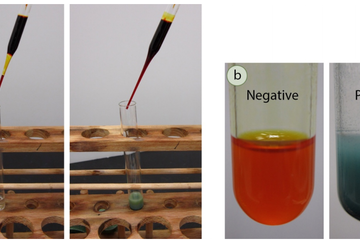We found 257 results that contain "venturit"
Posted on: #iteachmsu

ASSESSING LEARNING
Posted on: #iteachmsu

Grewan Hotels..
Delon workers
Authored by:
ASSESSING LEARNING
Tuesday, Aug 11, 2020
Posted on: #iteachmsu

ASSESSING LEARNING
Framework Builders- New Edition
Kindergarten-5. View their 2020 profile to find rankings, test scores, reviews and more. ... Lewis Lemon Elementary School serves 331 students in grades Kindergarten-5. The percentage of ... School Overview. Lewis Lemon.
Authored by:
Lenin

Posted on: #iteachmsu


Framework Builders- New Edition
Kindergarten-5. View their 2020 profile to find rankings,...
Authored by:
ASSESSING LEARNING
Tuesday, Aug 11, 2020
Posted on: #iteachmsu

DISCIPLINARY CONTENT
Coronavirus disease COVID-19 pandemic
The coronavirus COVID-19 pandemic is the defining global health crisis of our time and the greatest challenge we have faced since World War Two. Since its emergence in Asia late last year, the virus has spread to every continent except Antarctica. Cases are rising daily in Africa the Americas, and Europe.
https://www.undp.org/content/undp/en/home/coronavirus.html
https://www.undp.org/content/undp/en/home/coronavirus.html
Authored by:
Chathuri

Posted on: #iteachmsu


Coronavirus disease COVID-19 pandemic
The coronavirus COVID-19 pandemic is the defining global health cri...
Authored by:
DISCIPLINARY CONTENT
Tuesday, Jun 2, 2020
Posted on: Child Education

DISCIPLINARY CONTENT
Nature
Philosophers of science have suggested a number of criteria, including Karl Popper's controversial falsifiability criterion, to help them differentiate scientific endeavors from non-scientific ones. Validity, accuracy, and quality control, such as peer review and repeatability of findings, are amongst the most respected criteria in today's global scientific community.
ref: https://en.wikipedia.org/wiki/Natural_science
ref: https://en.wikipedia.org/wiki/Natural_science
Authored by:
Karl Popper

Posted on: Child Education


Nature
Philosophers of science have suggested a number of criteria, includ...
Authored by:
DISCIPLINARY CONTENT
Wednesday, Dec 2, 2020
Posted on: #iteachmsu

ASSESSING LEARNING
HRM Student Assignments
hired at Olympic View Elementary in 1996 and taught 6th grade primarily - during some of those years, I looped hired at Olympic View Elementary in 1996 and taught 6th grade primarily - during some of those years, I looped and taught the same students .
Authored by:
Helom
Posted on: #iteachmsu

HRM Student Assignments
hired at Olympic View Elementary in 1996 and taught 6th grade ...
Authored by:
ASSESSING LEARNING
Tuesday, Aug 11, 2020
Posted on: #iteachmsu

ASSESSING LEARNING
Chemical testing overview
Before spectroscopic analysis (IR, NMR) became commonplace in the organic chemistry lab, chemical tests were heavily relied upon to support compound identification. A chemical test is typically a fast reaction performed in a test tube that gives a dramatic visual clue (a color change, precipitate, or gas formation) as evidence for a chemical reaction. For example, addition of an orange chromic acid reagent to some compounds causes the chromium reagent to change to a blue-green color (Figure 6.37a). This is considered a "positive" test result, and in this case indicates the presence of a functional group that can be oxidized (alcohol or aldehyde). A negative test result is retention of the original color of the reagent, in this case the orange color
Authored by:
Chathuri

Posted on: #iteachmsu


Chemical testing overview
Before spectroscopic analysis (IR, NMR) became commonplace in the o...
Authored by:
ASSESSING LEARNING
Monday, Aug 26, 2019
Posted on: #iteachmsu

NAVIGATING CONTEXT
What is Attention Deficit Hyperactivity Disorder?
What is Attention Deficit Hyperactivity Disorder?
Classroom Interventions for Attention Deficit/ Hyperactivity Disorder Considerations Packet
Primer text from The College of William & MaryADHD is one of the most commonly diagnosed conditions of children (Centers for DiseaseControl and Prevention, 2015).
In a 2016 Centers for Disease Control and Prevention study, scientists found that 6.1 million children aged 2-17 years living in the U.S. had been diagnosed with attention-deficit/hyperactivity disorder (ADHD), which is similar to previous en
Ages 6-11: Approximately 2.4 million children
Ages 12-17: Approximately 3.3 million children
The diagnostic term attention deficit/hyperactivity disorder (ADHD) refers to individuals who display patterns of inattention, impulsivity, and overactive behavior that interfere with daily functioning (American Psychiatric Association [APA], 2013).
The Diagnostic and Statistical Manual (DSM) V (APA, 2013) criteria for diagnosing ADHD listthree types of ADHD and the accompanying characteristics.
The student may:o Appear to be in constant motion,o frequently fidget or move in his or her seat,o become restless during quiet activities,o leave his or her seat when expected to remain seated,o interrupt others and classroom activities,o talk excessively, and/oro fail to follow classroom procedures (e.g., blurt out answers without raising hand).
Combined type. The student may exhibit symptoms that include behaviors from both categories above.
In order for a student to be diagnosed with ADHD, symptoms must appear before age 12 and be exhibited across at least two settings. They must also have adverse effects on academic performance, occupational success, or social-emotional development (APA, 2013).
To add to the complexity of the diagnosis, children with ADHD are likely to have co-existing emotional, behavioral, developmental, learning, or physical conditions (Wolraich & DuPaul, 2010).
Classroom Interventions for Attention Deficit/ Hyperactivity Disorder Considerations Packet
Primer text from The College of William & MaryADHD is one of the most commonly diagnosed conditions of children (Centers for DiseaseControl and Prevention, 2015).
In a 2016 Centers for Disease Control and Prevention study, scientists found that 6.1 million children aged 2-17 years living in the U.S. had been diagnosed with attention-deficit/hyperactivity disorder (ADHD), which is similar to previous en
Ages 6-11: Approximately 2.4 million children
Ages 12-17: Approximately 3.3 million children
The diagnostic term attention deficit/hyperactivity disorder (ADHD) refers to individuals who display patterns of inattention, impulsivity, and overactive behavior that interfere with daily functioning (American Psychiatric Association [APA], 2013).
The Diagnostic and Statistical Manual (DSM) V (APA, 2013) criteria for diagnosing ADHD listthree types of ADHD and the accompanying characteristics.
The student may:o Appear to be in constant motion,o frequently fidget or move in his or her seat,o become restless during quiet activities,o leave his or her seat when expected to remain seated,o interrupt others and classroom activities,o talk excessively, and/oro fail to follow classroom procedures (e.g., blurt out answers without raising hand).
Combined type. The student may exhibit symptoms that include behaviors from both categories above.
In order for a student to be diagnosed with ADHD, symptoms must appear before age 12 and be exhibited across at least two settings. They must also have adverse effects on academic performance, occupational success, or social-emotional development (APA, 2013).
To add to the complexity of the diagnosis, children with ADHD are likely to have co-existing emotional, behavioral, developmental, learning, or physical conditions (Wolraich & DuPaul, 2010).
Posted by:
Archana Chaurasia

Posted on: #iteachmsu


What is Attention Deficit Hyperactivity Disorder?
What is Attention Deficit Hyperactivity Disorder?
Classroom Interv...
Classroom Interv...
Posted by:
NAVIGATING CONTEXT
Friday, Feb 17, 2023
Posted on: #iteachmsu

ASSESSING LEARNING
Critical Component #2: Thoughtful Classroom Setup and Structure
Skilled educators accept responsibility for planning and delivering instruction that brings the five critical components described below to life for all learners.
At times, external factors beyond the classroom walls will affect an educator’s ability to sustain all five critical components. Skilled educators find ways wherever possible to ensure that these five critical components are present in all aspects of classroom culture.
At times, external factors beyond the classroom walls will affect an educator’s ability to sustain all five critical components. Skilled educators find ways wherever possible to ensure that these five critical components are present in all aspects of classroom culture.
Posted by:
Scarlet Ethan Edien

Posted on: #iteachmsu


Critical Component #2: Thoughtful Classroom Setup and Structure
Skilled educators accept responsibility for planning and delivering...
Posted by:
ASSESSING LEARNING
Wednesday, Mar 10, 2021


